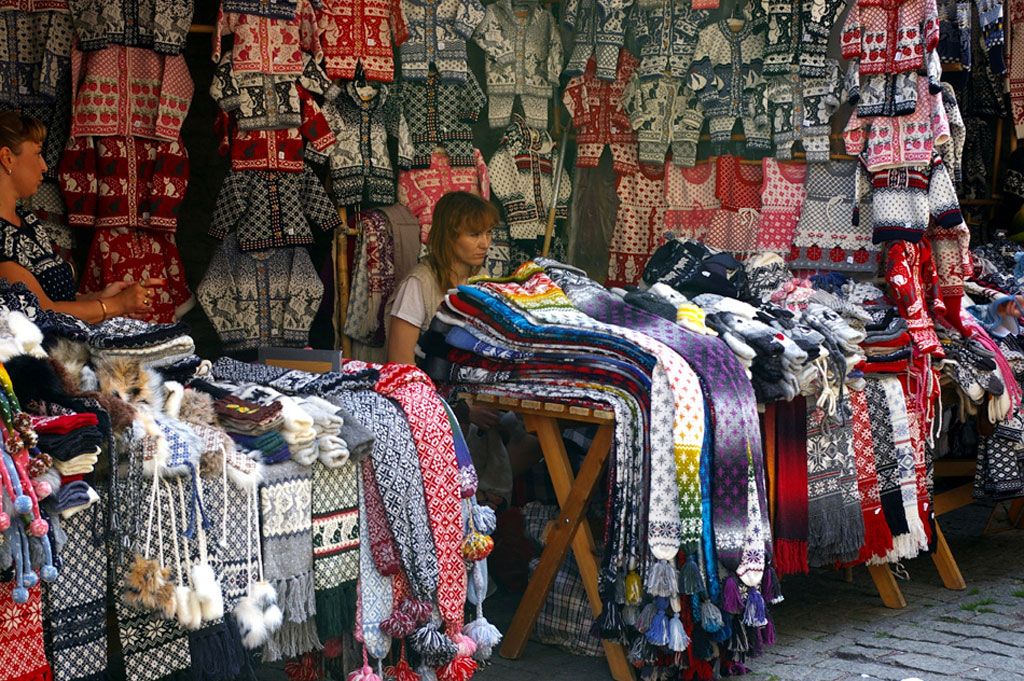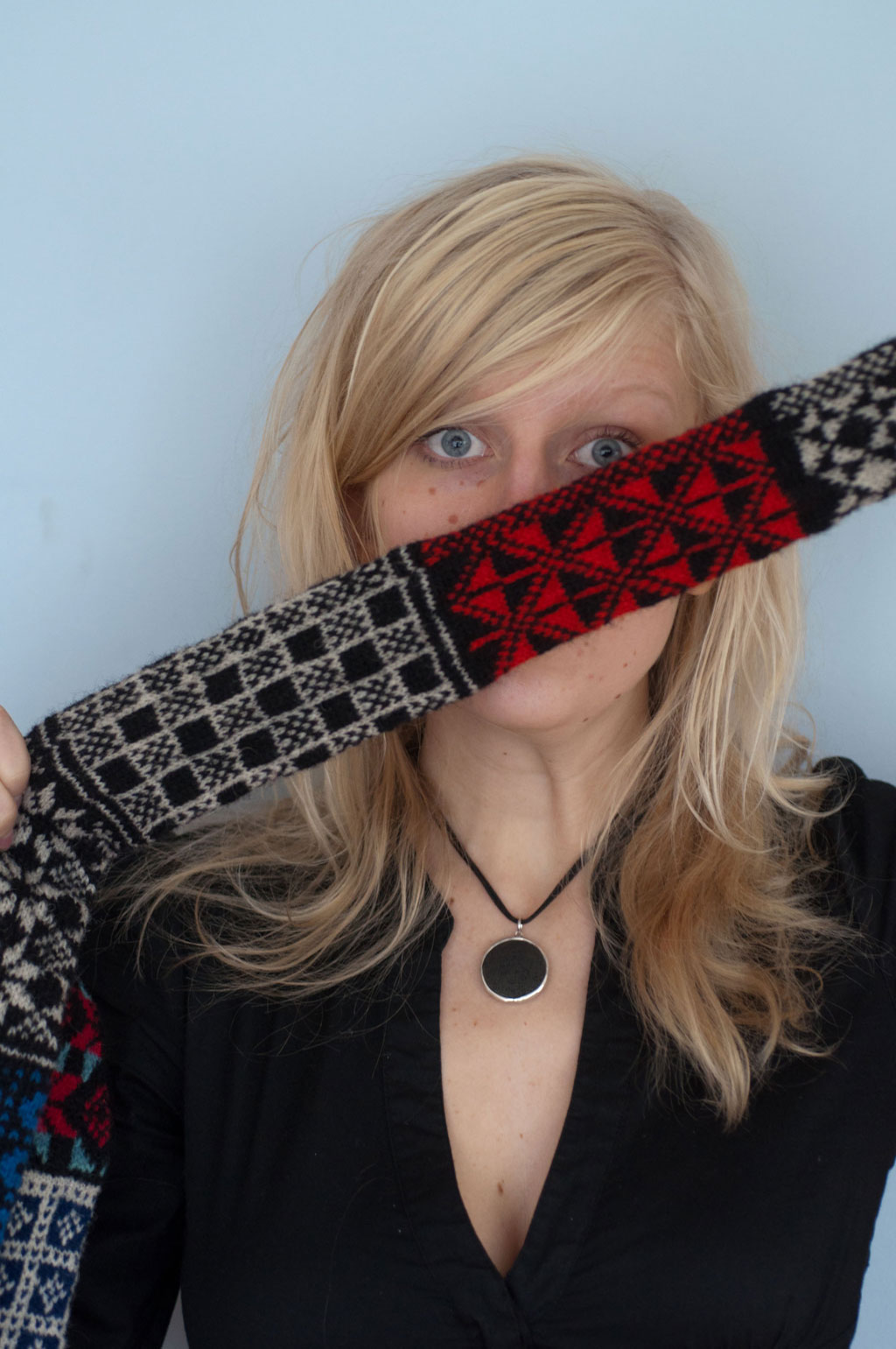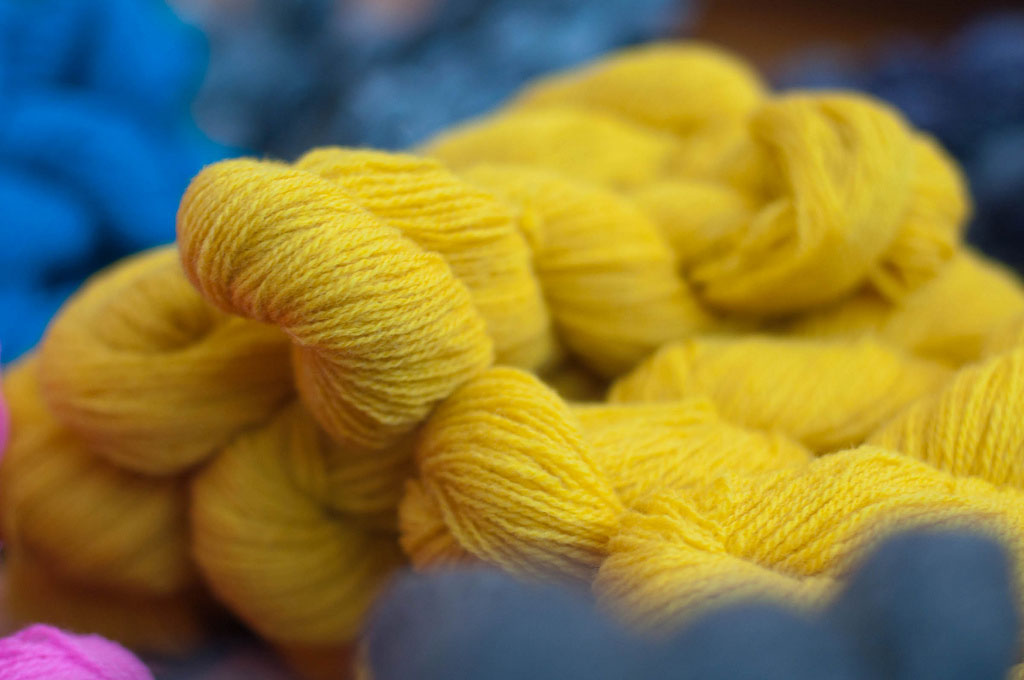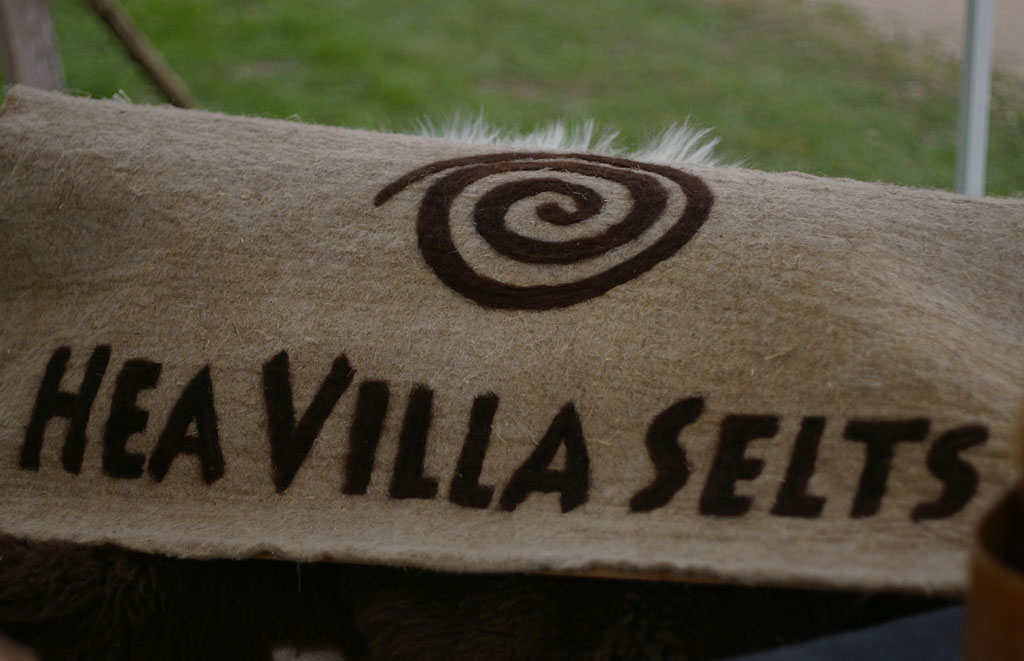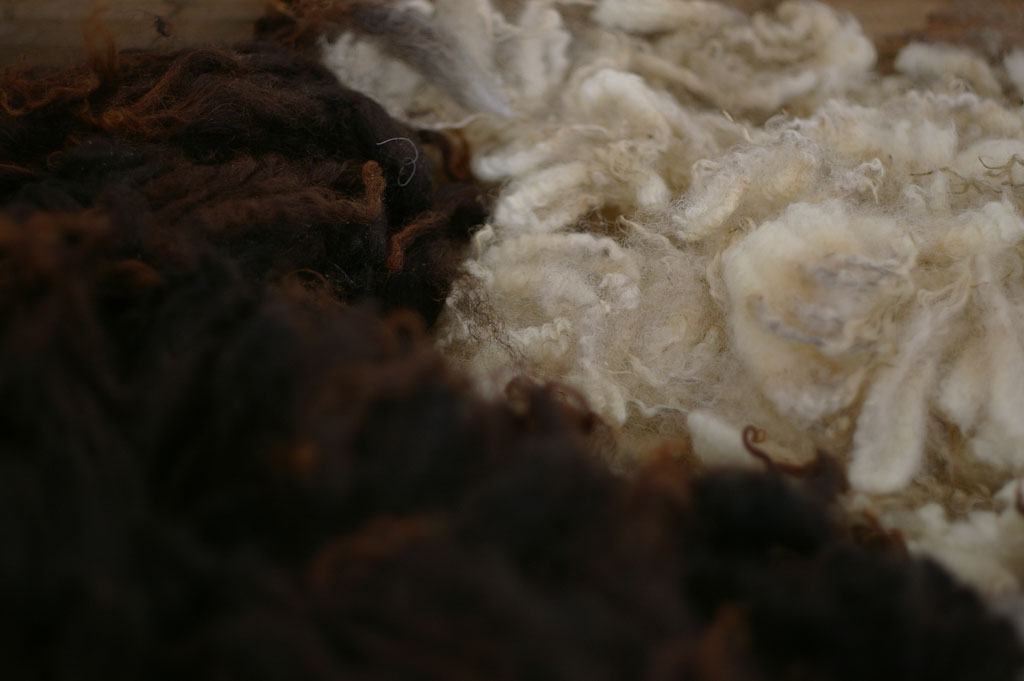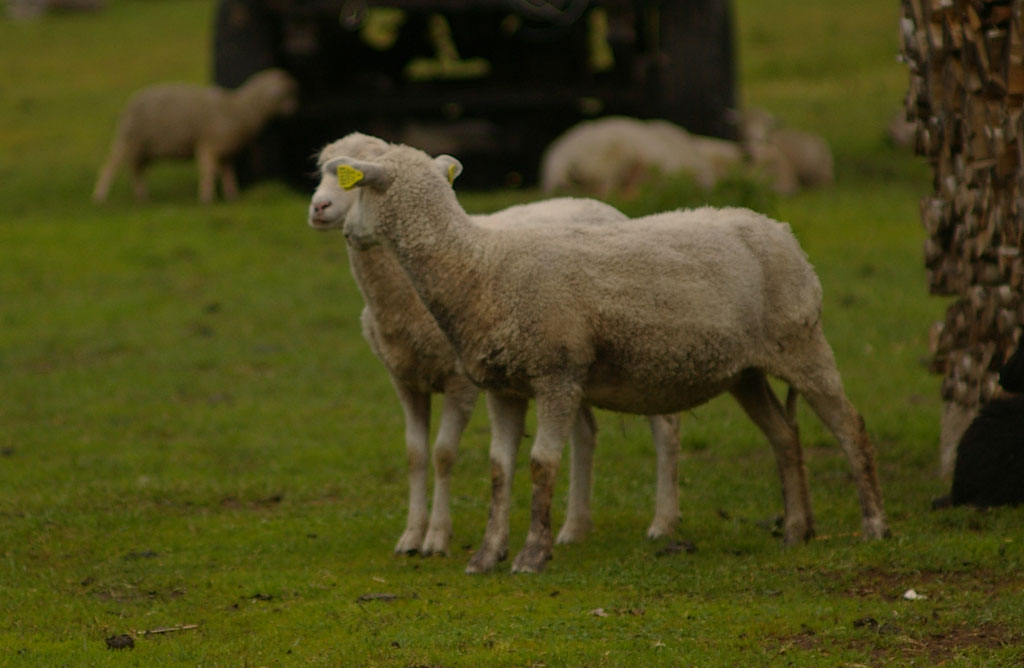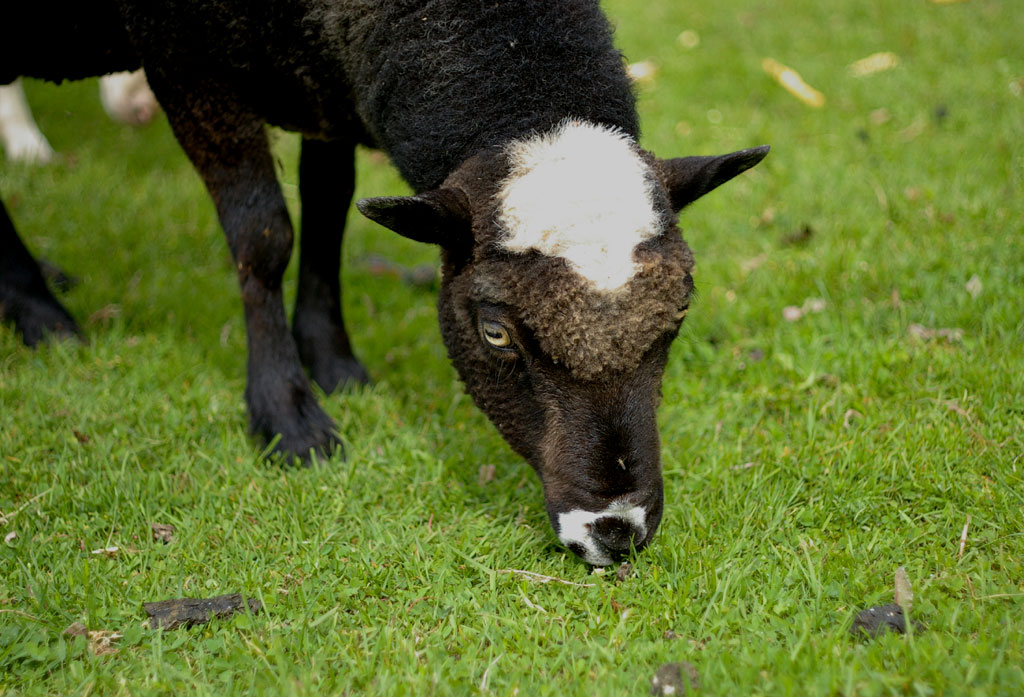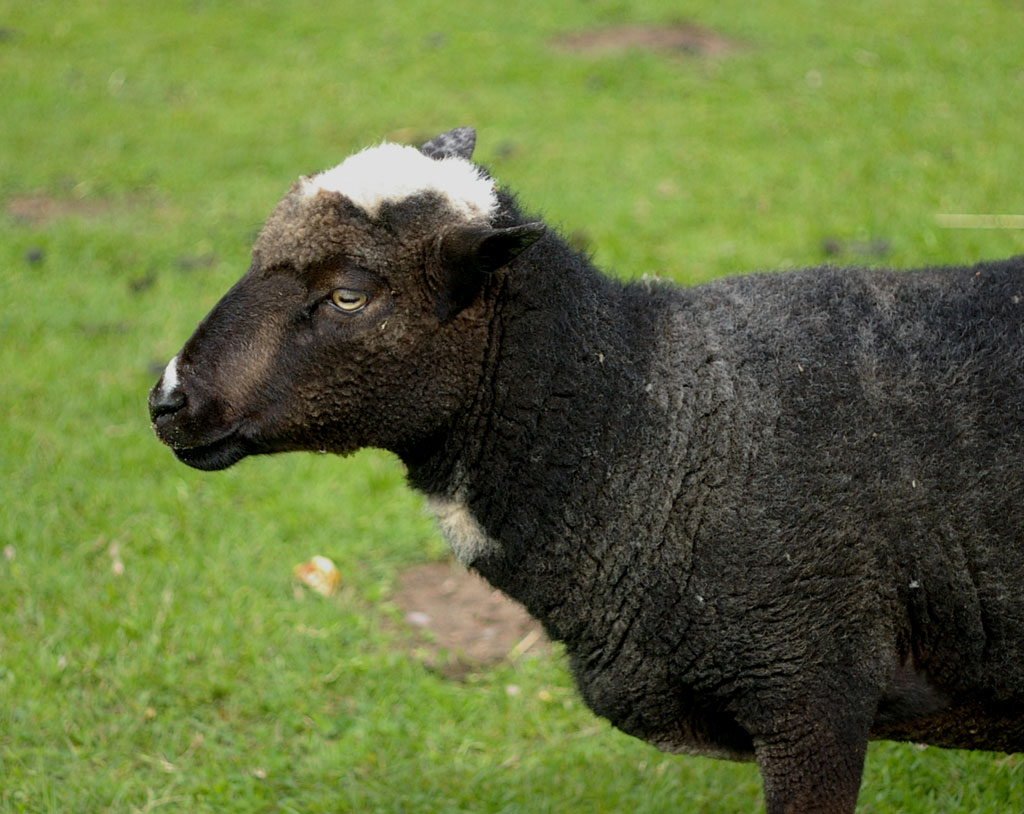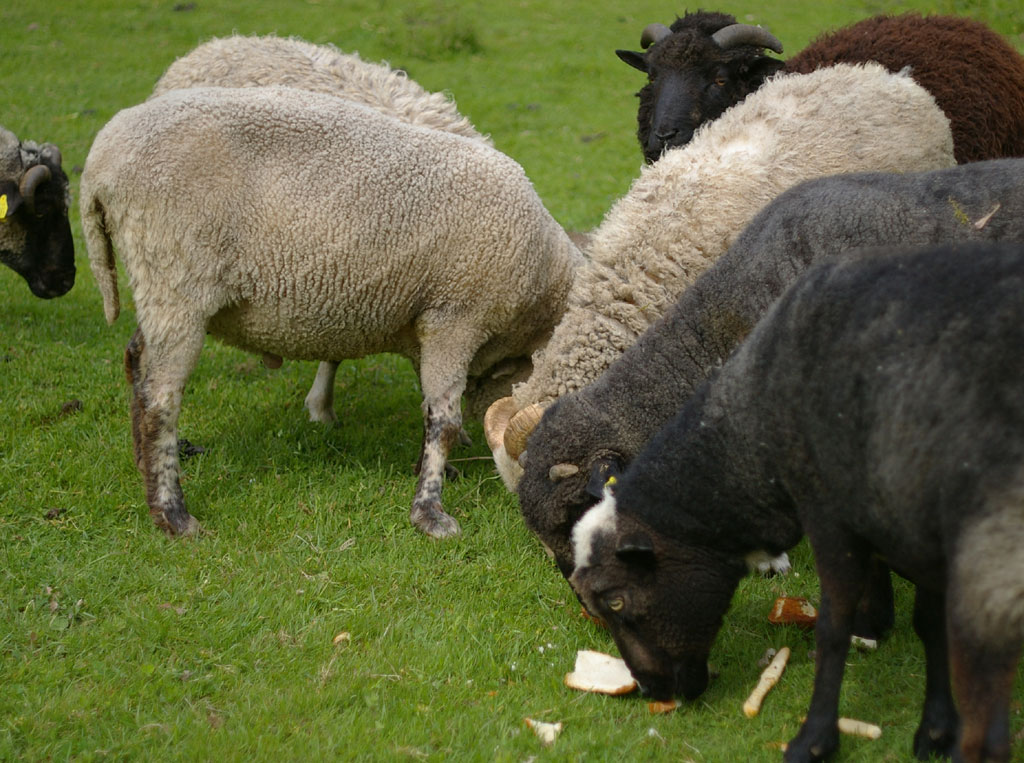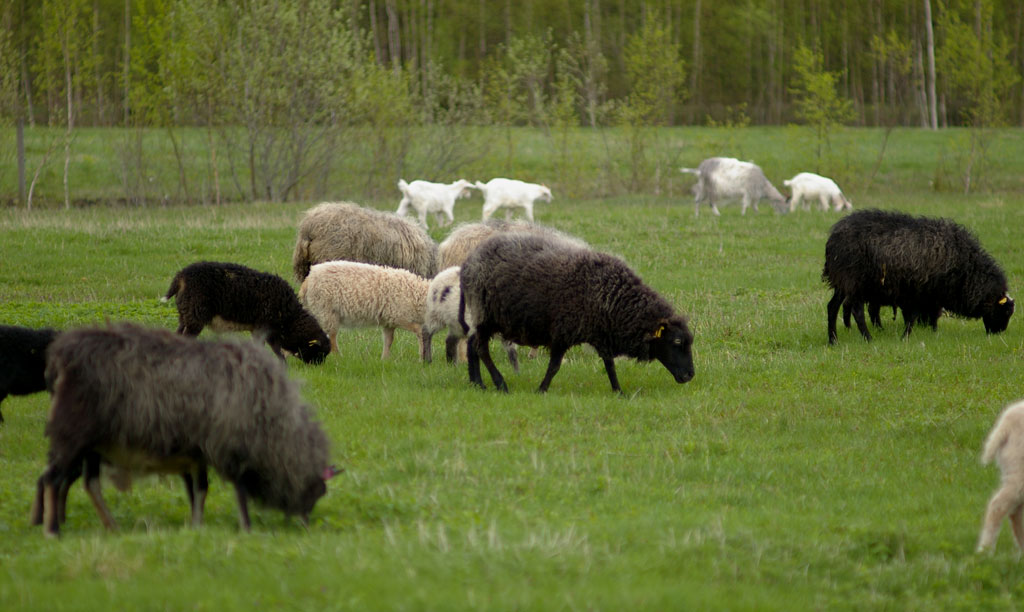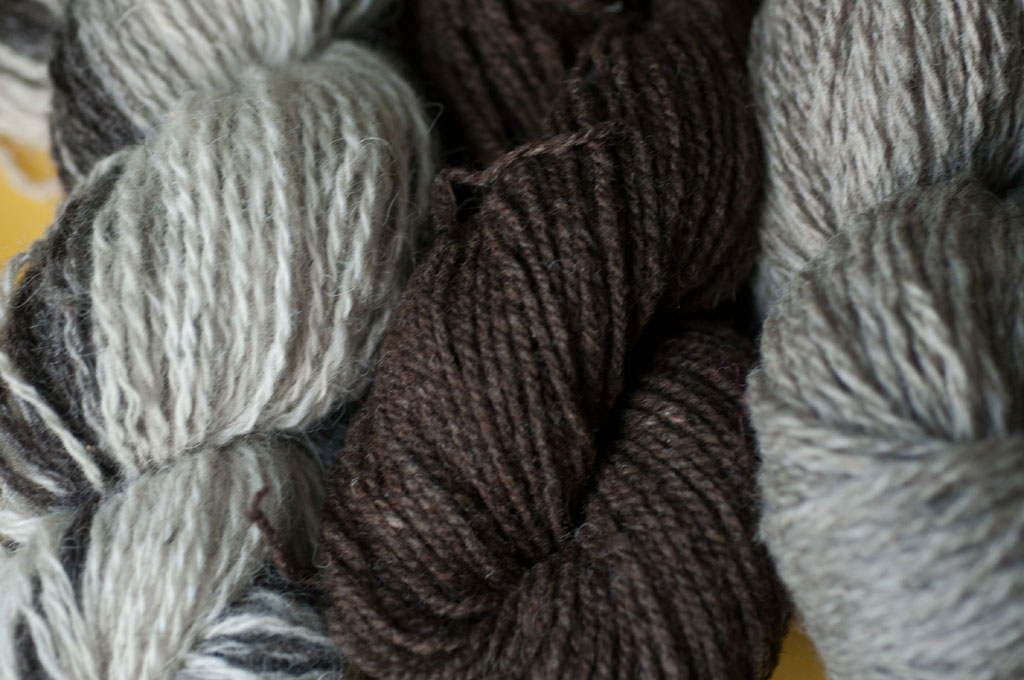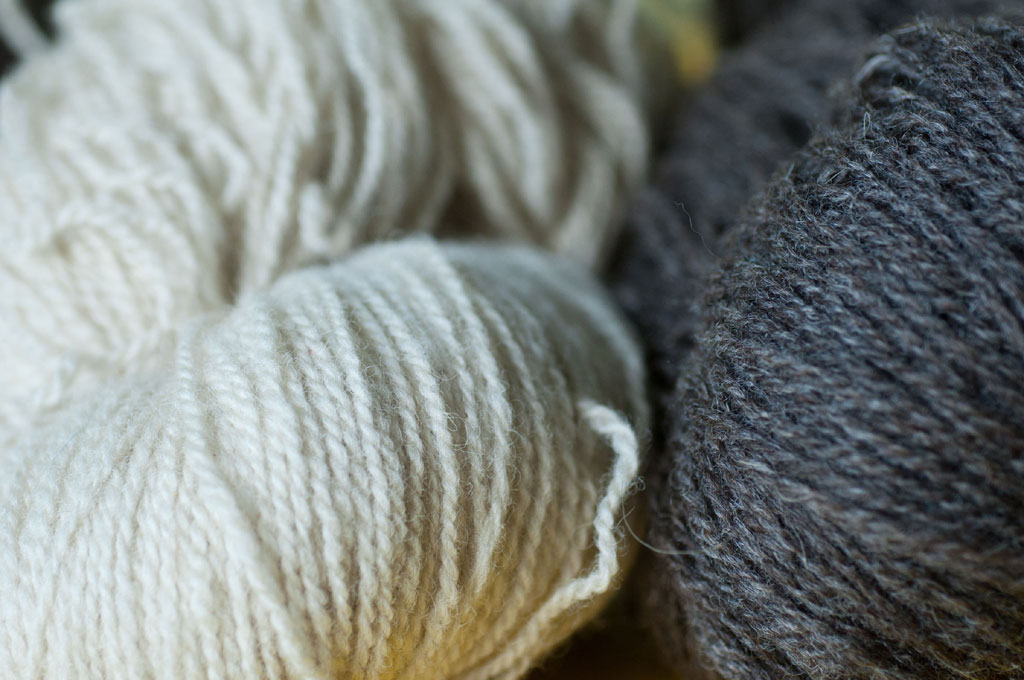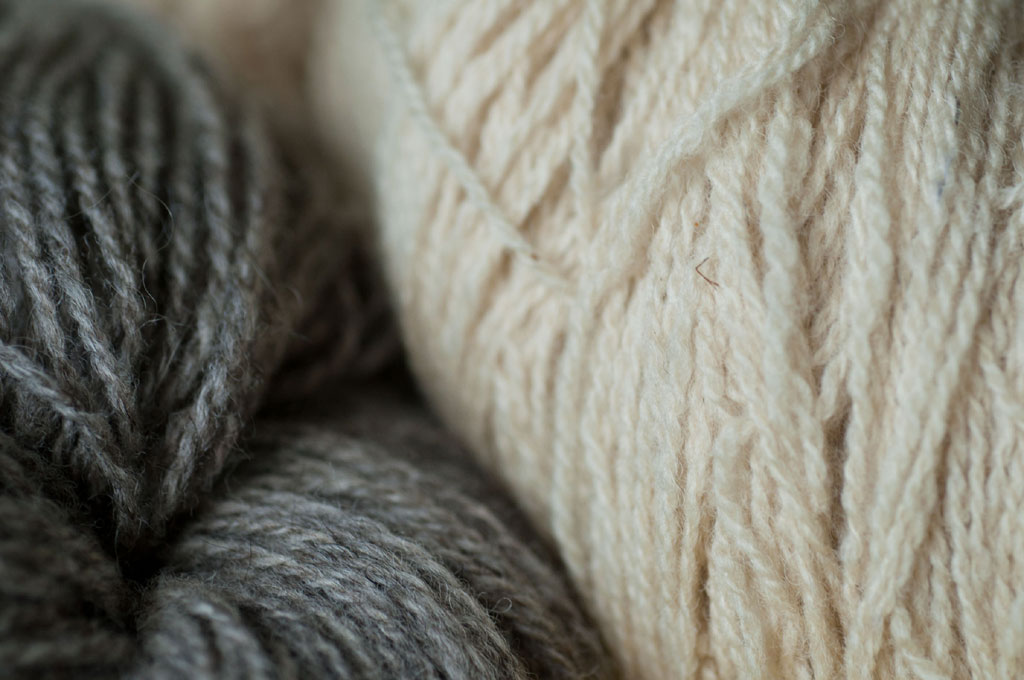If one is at all interested in Working with Wool, it is quite difficult to avoid the distinctive regional textiles produced in Estonia.
Sock, from Haljala Parish, Estonia, photographed at Eesti Rhava Muuseum by Felicity Ford
In the US, Nancy Bush in particular has popularised the knitting traditions of this tiny county in the Baltics, and the wonderful book about The Needlework Traditions of Muhu Island produced by Saara publishers documents the diverse range of wool-related handicrafts embedded in the folk costumes and traditions of Estonian culture. (For an excellent review of this book, please read this post by Kate Davies).
Last Summer, TEAM WOVEMBER member Felicity Ford travelled to Tallinn in Estonia for the Tuned City sound art festival, where she was intrigued by the vast banks of knitwear-for-sale lining areas of the city. Where was this knitwear from? Who had knitted it? Where had the wool used in its production come from?
Tallinn knitwear purveyors, photographed Summer 2011 by Felicity Ford
These questions prompted Felicity to apply for an artist’s residency in Estonia, during which time she intended to learn more about Estonian Wool. Her application was successful, and armed with many sounds and artefacts relating to UK WOOL, she sallied forth in May 2012 to undertake a month-long cultural exchange themed around wool. The residency was supported by MoKS Center for Art and Social Practice, and The British Council, Estonia, and her time was spent researching Estonian Wool in all its myriad aspects. During the stay she met and interviewed several shepherds; learnt about the work of Hea Villa Selts, (The Good Wool Society); discovered the quest to get The Estonian Native Sheep recognised officially as a distinct sheep breed; learnt of the existence of Know Sheep; recorded many sounds of sheep in their Estonian landscape; and put on concerts, talks and workshops themed around WOOL. The whole trip was fruitful and learning-filled, but one of Felicity’s favourite things was meeting Estonians with great passion for their own animals, textile traditions, and sheep breed. Kata – an extremely talented Estonian handicrafter – has kindly contributed this article to WOVEMBER 2012 on the theme of Working with Wool. Further recommended reading on Estonian Wool includes the wonderful article which Julika Roos put together for YarnMaker Magazine on the history of handspinning in Estonia. In the meantime, here is Kata, giving a perspective from Estonia on what wool means to her… and here are some of the sounds recorded during Felicity’s travels, to provide some atmosphere for reading about maavillane, (wool) and Eesti lammas… (Estonian sheep)
[soundcloud url=”http://api.soundcloud.com/playlists/2774261″ height=”200″ iframe=”true” /]
My name is Kata and my words come to you from the rather small Estonia. Two months ago, Felicity very kindly asked me to write a blog post about what wool means to me. Although inspiration took its time (slow blogging goes hand in hand with slow textiles), I am happy to say that once it came, it was copious and will be divided into two separate posts: one about Estonian wool and the other about mending.
Wool has slowly grown on me. It would be impossible to start from the beginning, so I’ll start from the point where I discovered that knitters also use the Internet. All sorts of crafts – including knitting – have been a part of my life for as long as I can remember; unfortunately, though, knitting yarns weren’t especially soft – or available – so I was not very passionate about knitting or wool.
Five years ago, I discovered knitting blogs. Oh, the opportunities – a whole universe of fantastic yarn and knitted items opened before me! – and soon I was head over heels in love with knitting. I was drawn to Elizabeth Zimmermann’s patterns, and ordered some of her books; her love and respect for wool is an integral part of her writing and work – and this certainly helped in shaping my views on wool.
Titetekk n., based on both the Elizabeth Zimmerman’s Stontigton Shawl and inspired by Jared Flood’s Tweed Baby Blanket
WOOL –
Soft wool from the simple silly sheep can be as fine as a cobweb, tough and strong as string, or light and soft as down. There are scientific reasons why wool is the best material for knitting, and into these I will not go. I only know that it is warm, beautiful, and durable.
– Elizabeth Zimmerman on WOOL, The Opinionated Knitter
Kata’s Tema teine kampsun, Elizabeth Zimmerman’s Seamless set-in sleeve sweater
I will hop over the initial excitement of bamboo, silk, alpaca and others and fast forward to the spring of 2012. I had followed the first Wovember (2011) and had been smitten by both Kate’s and Felicity’s work and their love for wool. However it wasn’t until Felicity came to Estonia for a month to investigate Estonian handicrafts and shepherding that I became painfully aware of the need to draw Estonian wool into focus.
Although one wouldn’t say this based on Felicity’s blog coverage, wool is a covert affair around here. I won’t delve into the question of the general public’s view on wool, but rather describe how textile people think of wool.
Maavillane is the key word here. This is a generic term used to refer to the woollen (rather than worsted) thin wool yarn specific to Estonian yarn production. Maa means ‘earth, land’ and villane mean ‘woollen, of wool’. Traditionally, maavillane has been produced of the native sheep’s – maalammas – wool. Unfortunately, this term has rather unfortunate connotations; maavillane is thought of as scratchy and unpleasant, as much as meriino (merino) is believed to the best type of wool ever produced. The disparity between how maavillane and meriino are viewed is so great, that in my opinion many people consider wool and merino to be separate categories.
Photos of maavillane – or Estonian sheep wool – for sale at the Hea Villa Selts or Good Wool Society stall at the Heimtali Craft Fair, May 2012, photographed by Felicity Ford
For instance I recently attended the biggest craft fair in Estonia and was just stroking a wonderfully soft and gentle skein of maavillane, when some garment was advertised over the loudspeakers, the main feature of it being that it was ‘made of merino’. A shepherd of Estonian Native Sheep – Imbi Jäetma – and I, concluded that there really is an outright cult of said sheep-breed and returned to the wonderful qualities of her native sheep’s wool.
Kaisa meeting Imbi’s rams, photo by Felicity Ford
Kaisa, Mark, Taavi, Imbi and hungry Native Estonian ram looking for bread! photo by Felicity Ford
Photos of Imbi and Taavi Jäetma’s flock of beautiful Estonian Native Sheep taken by Felicity Ford
I should point out that by no means am I against merino or any other sheep-breed; rather I am for informed choices, and for picking the most suitable yarn for a given garment.
Another thing concerning most of the maavillane available through the spinning mills is the wool used. Although maavillane is believed to be Estonian – and true, it is spun in Estonia – almost all of the wool itself comes from abroad. According to a newspaper article, 95% of the fibre used in the biggest spinning mill in Estonia comes from Australia, New Zealand and Sweden.
There is still hope! There are shepherds who appreciate the wool they grow and take a genuine interest in the quality of their sheep’s fleece. They go to small mills like Süvahavva – often with hundred-year-old equipment – which agree to spin their moderate quantities of fleeces.
[youtube http://www.youtube.com/watch?v=gUJj7URY2dM&w=560&h=315]
Estonian video about Süvahavva Wool Factory – one of the few factories in Estonia where you can take your sheeps’ fleeces and get them back as spun yarn!
This work is done because the shepherds have WOOL in their hearts and souls.
Views from Jaani Talu, the farm of shepherds Julika and Joel Roos, photographed by Felicity Ford
The love for wool catches on. I heart actual Estonian wool. I want to make it more visible, and so I have decided to knit myself a jacket similar to Felicity’s Layter, only in Estonian wool. Also, I will knit my partner a similar cowl as a consolation prize!
Some of my favourite Estonian yarns
Buying yarn directly from shepherds has been an interesting journey. I have personally talked to most of the shepherds whose yarn I will use. I have gotten to know them one by one, as the craft fair I mentioned is virtually the only time in the year when one can find all the Estonian wool yarns in one place. I hope that the garments I am planning to make will serve as a manifestation of, and study material for, Estonian wool, and that their creation will raise awareness of wool in general.
Most of all, it will keep the heart, mind and body warm during the long dark winter ahead of us here…
All content unless otherwise stated © Kata and published here with her kind permission. Thank you Kata for giving us an Estonian perspective on maavillane

